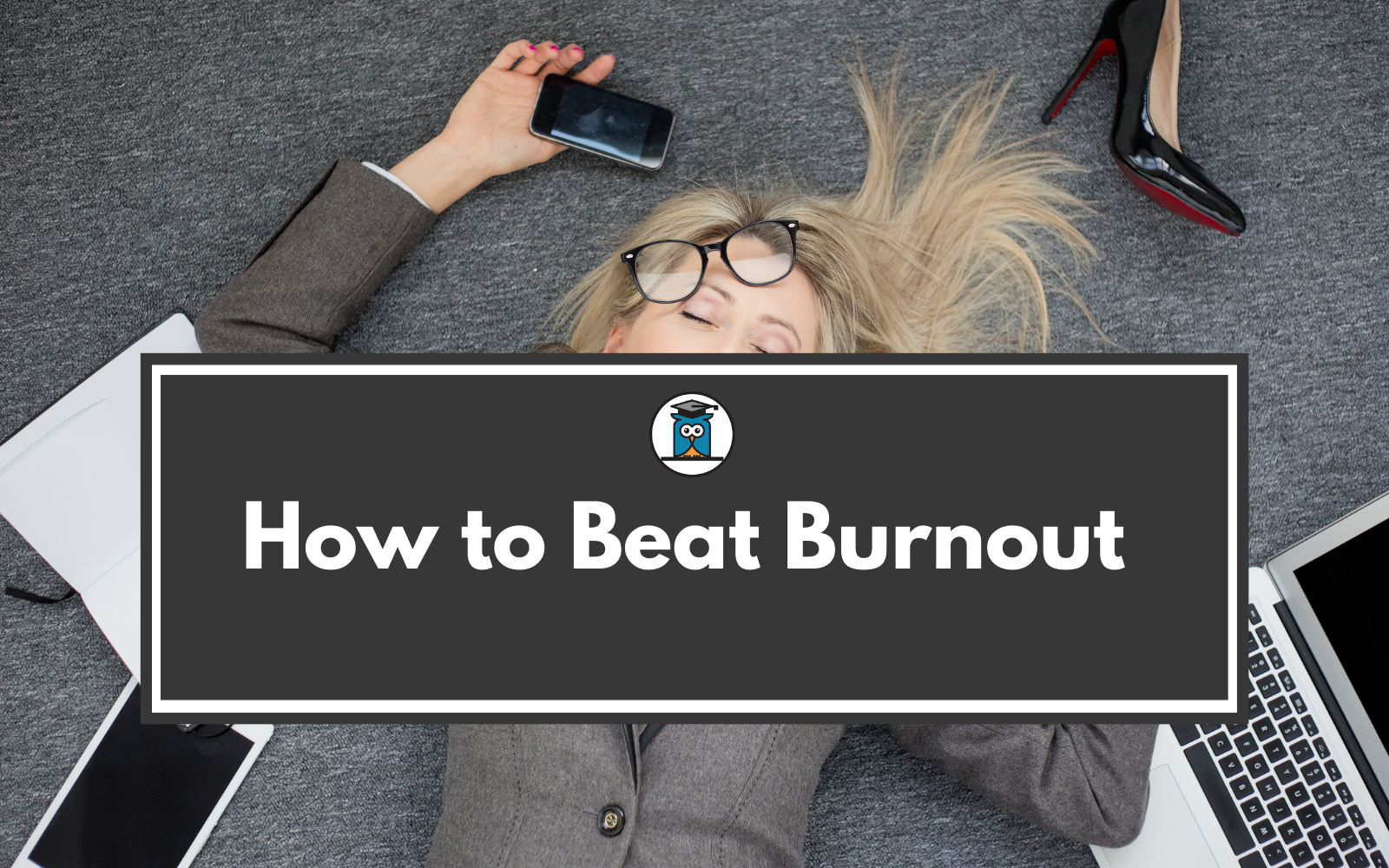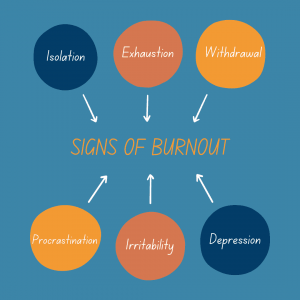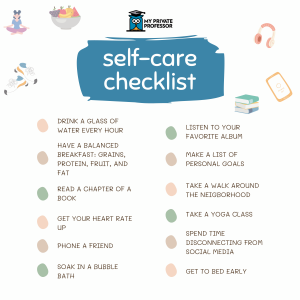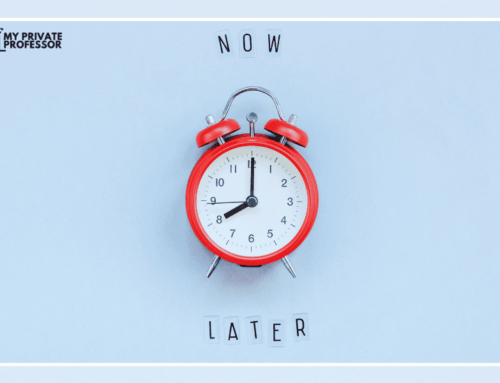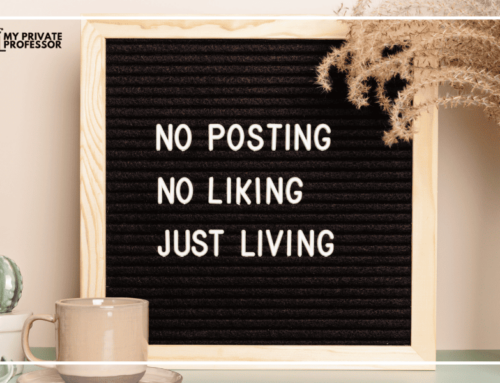What is burnout?
If you’ve ever put all of your energy into work, or school, or anything, maybe you’ve experienced something called burnout. Burnout is the product of excessive and enduring stress that can arise and build over time, causing you to feel entirely overwhelmed and drained.
Burnout can make you feel depleted & distracted; you may notice your productivity and motivation dropping, leaving you feeling hopeless and anxious.
Moreover, as you try to push through the exhaustion, burnout effects intensify and begin to carry over into daily life. Basically, it’s counterproductive to ignore these feelings. Instead, the only way to replenish yourself is to work on combating the stress and negative feelings. Trust me, you’ll feel way, way better after some R&R.
Within the past few years, the burnout rate has significantly increased. In a survey from 2020-2021, student burnout rose from 40% to 71% in 2021. And this is unsurprising, as the pandemic forced workers and students alike to transition to completely new environments. Currently, we’re still seeing a ton of burnout among teachers, students, workers—you name it. As such, it’s crucial to recognize what burnout is, why and when it happens, and what to do.
Burnout symptoms
Symptoms and signs of burnout include those that are emotional, behavior, and physical. Furthermore, it can be difficult to identify these symptoms and understand that you are, in fact, burnt out.
Common emotional symptoms include a sense of helplessness, detachment, and isolation. Behavioral symptoms may include withdrawing from responsibilities, procrastinating, and taking frustration out on others. Finally, physical symptoms typically include exhaustion and lethargy.
Why does burnout occur?
Because every individual is unique, surrounded by different circumstances, burnout can be due to a variety of reasons. Often, it stems from work-related issues such as perceived lack of control, unclear tasks, and/or overly demanding work.
Becoming burnt out can also be the result of lifestyle and/or personality issues. For example, a lack of close social relationships, poor sleep, or taking on too many responsibilities can all lead to burnout. In addition, personality traits such as perfectionism, pessimism, and the chronic need to be in control can cause burnout.
In their 2011 paper, psychologists Herbert Freudenberger and Gail North describe the 12 phases of stress syndrome, which begins with excessive drive, and ends with mental and/or physical collapse. Their phases demonstrate that slowly, excessive ambition can lead to burnout.
Reducing burnout
Fortunately there are many strategies you can implement. You can modify your lifestyle, practice self-care, and assess your social relationships.
For instance, changing your lifestyle is often, in essence, modifying your perspective. changing the way you think may be avoiding self-criticism or recognizing gratitude and positive values, or making your standards achievable.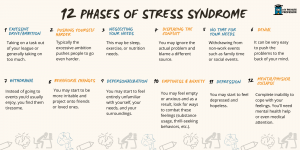
In addition, you can improve your relationships by avoiding toxic relationships and learning how to set boundaries. Remember that saying no can be crucial to nurturing yourself—boundaries are healthy and necessary.
Finally, self-care strategies include following a healthy diet, finding creative outlets, and getting outdoors regularly.
Prioritize self-care
Self-care is the biggie here. When recovering from burnout, it’s critical to revive your energy—this includes physical and emotional energy. Doing so allows you to refocus your brain and body.
Prioritizing self-care in this case goes hand in hand with prioritizing sleep, since extreme exhaustion is usually a major burnout symptom. It may feel odd to be nurturing your sleep (especially for anyone who’s used to banging out a few hours of sleep regularly then going into the office), but the benefits you’ll reap are worth it in the long run.
Try implementing some relaxed exercising into your day (which, yes, sounds counterintuitive!). This may be yoga, meditation, or tai chi. Or a simple, short walk may shift your mood significantly. Find what works for you.
If you’re having trouble with a busy schedule, it’s essential to take some time off so you can prioritize self-care. During this time, you can use the opportunity to really reflect on your schedule and pinpoint what’s draining you the most.
Re-discover your passions and hobbies—what makes you the happiest?
Change your perspective
Taking some time to reevaluate your schedule and priorities is important, but will not entirely protect you from becoming burnt out. When you have a fixed mindset around your work (or whatever is causing your burnout), you won’t be able to modify your life for the better.
You need to truly look inward and determine what exactly is causing the brunt of your symptoms. Then, based on what you discover, you’ll need to make changes.
How can you use your energy in ways that won’t leave you feeling entirely worn out? Does this mean giving up certain tasks and losing some responsibilities? It probably does.
Lifestyle changes
If you try to simply throw yourself back into your hectic routine and work life once you feel you’re ready, you may as well have not learned anything. Maintaining the same lifestyle will likely just result in experiencing burnout again. You need to make concrete changes!
For many people, a major lifestyle change is becoming more strict about work hours. By this, I mean that once the work day is over, it’s over, and you won’t be doing work. Lots of people find it challenging to draw this line, which is especially true for working remotely, since for many people, when the workday ends, you’re still in your office, and it’s hard to truly disconnect.
Lifestyle changes will allow you to maintain energy throughout your work weeks. Lifestyle changes may include eating better, having a more regular exercise routine, and practicing meditation and/or yoga.
Also, have a peek at our 7 tips for focusing and avoiding distraction when working remotely.
Author: Lydia Schapiro


